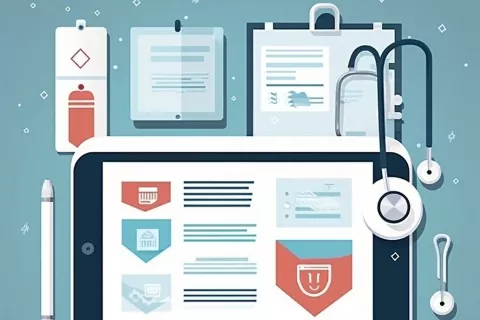Registering a medical device with the FDA requires an apt submission pathway. In most of the cases, identifying and selecting a pathway is quite simple. For example, as discussed in our previous blog, if there exists a predicate for your medical device, then file a 510(k). If not or if your device is of class III, then file a pre-market approval (PMA). But is it always the case? Not necessarily. 95% of the devices in the USA are registered via 510(k) or PMA, and the other remaining percent of the devices take the lesser travelled path. In case your device does not fall into any of the aforementioned categories, you may choose to stick to the traditional pathways or you can evaluate all the options and see which one fits the best.
Let’s take a look at the lesser-known pathways
1. De Novo
FDA intends to decrease the time-to-market for devices by taking several actions for the medical device pathways. Hence, it is planning to streamline “De Novo”. De Novo is a pathway for devices which have sufficient general and special controls assuring safety and effectiveness but lack a suitable Substantially Equivalent (SE). In such cases, De Novo classifies the devices on the basis of risk factors. It can be requested when:
- A high-level not Substantially Equivalent (NSE) determination is received from the FDA in response to 510(k) application
- According to the manufacturer, there exists no legally marketed device in the US which can be used as a Substantially Equivalent
The pathway is simpler as compared to 510(k) and helps in risk mitigation. Once a device is classified as a Class I or Class II device by De Novo pathway, they can be used as a predicate for the future devices.
2. Humanitarian Device Exemption
Humanitarian Devices are those devices which benefit patients by treating or diagnosing a disease or condition that affects less than 8,000 people. If a manufacturer wants to market a humanitarian device, he must submit a human device exemption and prove that there is no similar device in the market and there is no other way to market the intended device. The approved device is then called Humanitarian Use Device (HUD).
3. Custom Device Exemption
Custom device exemption or CDE is the least commonly used submission pathway. According to the amendments of FDA under Food and Drug Administration Safety and Innovation Act (FDASIA), a device that meets the qualification of a custom device is exempted from 510(k) and PMA. A custom device should not generally be “available in finished form for purchase or for dispensing upon prescription and is not offered through labeling or advertising.” Historically, CDE was used for dental appliances, prescription glasses and prosthetic limbs. CDE is most appropriate for personalized devices which can be finished as per the requirements of patients or the health authorities. Even though it is not used widely, CDE has some limitations to its use, such as:
- The device is used for the purpose of treating a “sufficiently rare condition”, such that conducting clinical investigations on such a device would be impractical
- The production of the device must be “limited to no more than five units per year of a particular device type”
- A manufacturer is required to submit an annual report to FDA on the custom devices it supplied
4. Product Development Protocol (PDP)
PDP is an ideal pathway for the devices with “well-established” technology. It is a sub-type of PMA. PDP is basically a contract which allows the sponsors to reach an early agreement with the FDA concerning how to demonstrate safety and effectiveness of the new device. This saves the sponsors from spending expensive resources by addressing the concerns of FDA at an early stage. Once PDP is received, the device is considered to be PMA approved.
PDP is beneficial for devices which belong to class III but have technology that has been around for a while. It creates an understanding between the manufacturer and the FDA.
5. Compassionate Use Provision
Compassionate Use Provision is also known as emergency use provision. As the name suggests, the pathway allows the use of investigational medical devices (i.e., one that has not been approved or cleared by FDA), outside clinical trials, in life-threatening or emergency cases where the patient does not have much or any alternatives. This provision is generally issued for an individual patient but can be used for small groups as well.
Having considered all the pathways, it is safe to say that looking beyond the obvious can be beneficial for both the company and the industry. Therefore, while registering for a medical device, consider all the valid Regulatory pathways and weigh their pros and cons from all the perspectives. To build a successful Regulatory strategy for medical devices consult a Regulatory expert to know what pathway suits you the best. Stay compliant.











